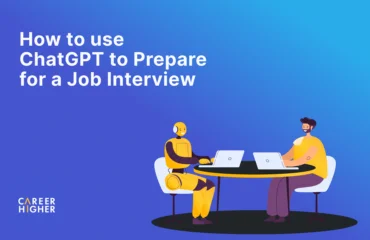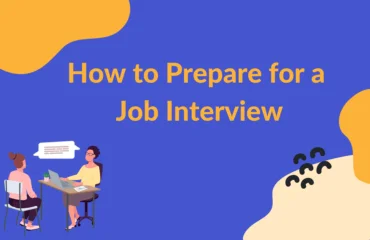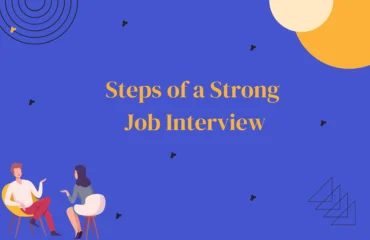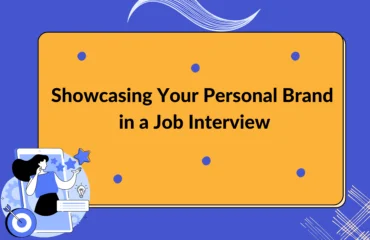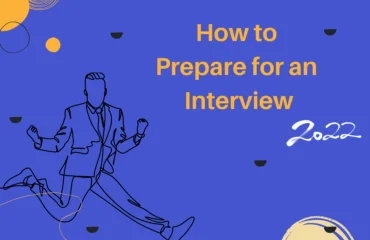Table of Contents
According to research, body language and tone of voice play a key role in communication. More specifically, when we interact with other people, 55% of the cues we receive are non-verbal, 38% relate to the tone of voice, and only 7% connect with the exact words we use or hear. Undoubtedly, the non-verbal signals we send and receive during a conversation affect its quality massively.
During job interviews, communicating effectively with the interviewer is crucial to make a good impression on them and get the job. So how can you ensure that all your communication channels will work in your favor on that day? With the right interview preparation, everything will be on point. Here, we share some valuable tips for interviewees regarding body language and tone of voice to help you out.
Body language and voice projection tips for your next interview
Firstly, to have positive body language on the interview day, it’s important to be rested and relaxed. To avoid being fatigued and uneasy, get a good night’s sleep and eat healthily. Also, pick an outfit that makes you feel comfortable and confident, and make sure to arrive at the meeting well-prepared. For example, organize the items that you’ll need during the interview, such as a printed copy of your resume or your cover letter, well in advance. This way, you’ll reduce anxiety and tension before the assessment starts, emotions that could easily distract both you and the interviewer.
And now the time has come. You’ve reached the interview location and the interviewer is waiting for you. What will happen next?
1) Handshake
As you may know, first impressions count. That’s why it’s important to gain the interviewer’s trust from the beginning, in this case through a handshake. Since the interviewer is hosting this meeting, wait for them to give you their hand first. When this happens, look them in the eye and return them a firm and steady handshake to shield a great first impression.
2) Body posture
Once the interviewer has welcomed you, it’s time to take a seat. Make sure to sit upright, not too loosely nor too tightly, and lean your body towards them. It’s best to keep your items close to you in case you need anything during the interview process. Plus, avoid crossing your legs or arms, as this could reveal defensiveness and insecurity. Instead, keep an “open body” position that shows curiosity and self-confidence, and make yourself comfortable.
3) Eye contact
Remember to make eye contact with the speaker to show them that your attention is on them. Take some small breaks in-between to look at the environment around you when you see fit. This way, you won’t intrude on the interviewer’s personal space and you’ll help them feel comfortable, as well.
4) Gestures
When we talk, we usually move our hands naturally to emphasize what we say. In most cases, this promotes healthy communication. Make sure not to overdo it though, as you might distract the interviewer. Try to avoid some automated, unconscious habits, such as touching your face, as it may seem impolite.
5) Listening
To make someone understand that you’re listening to them, it’s important to send them cues that you notice what they say. Nod your head at certain moments, smile to show them that you’re positive, and make vocal affirmations, especially when you haven’t spoken for a while. In short, be fully present.
6) Tone of voice
Based on the stats mentioned earlier, tone of voice impacts communication more than the actual words we say. Overall, a gentle but secure tone of voice will enable you to initiate and maintain clear communication. Project your voice clearly and let it fluctuate to show emphasis when needed. On the other hand, a monotonous, low-pitch voice could indicate that you’re indifferent.
7) Mirroring
Finally, if you want to take it to the next level, you can follow the mirroring principles. Mirroring often happens unconsciously when trying to build rapport with someone. But we can also self-organize with the speaker on purpose by mimicking their behavior or highlighting our common traits to nurture a sense of belonging. However, it’s important to stay true to yourself and avoid exaggerating, as you might show a lack of authenticity.
About video interviews
The majority of interview tips shared above apply to video interviews as well, except for the handshake. The interviewer receives the rest of the non-verbal cues through the screen as they would in real-time.
If you want to maintain eye contact virtually, look straight at the camera when you talk and focus your eyesight on the screen when the interviewer takes the lead to show them that you listen. To ensure an efficient experience from the interviewer’s side, before the interview starts, check all the equipment your non-verbal communication will rely on during the call: camera, microphone, and internet connection.
About phone interviews
As for phone interviews, tone of voice is the main non-verbal cue. Apart from the relevant tips mentioned above, we strongly recommend taking the call in a quiet place so that the interviewer can hear you. Plus, during phone interviews, vocal affirmations matter a lot as the interviewer is unable to observe if you listen to them through your body language.
Conclusion
To sum up, body language and tone of voice will define the success of your next interview to a great extent. To achieve the best results, you can practice alone by recording yourself to improve your body language or learn how to control your voice. You can also book a mock interview session with a career strategist or coach, who will help you absorb all this information quickly and efficiently.
A final note: All these tips can be handy and useful during interviews, but what matters the most to get the job is your skillset. That’s why it’s important to stay true to yourself and avoid replicating something that feels unnatural to you. All these practices will eventually enable you to reduce unnecessary noise and distractions and help the interviewer concentrate on your talents, work values, and credentials.



